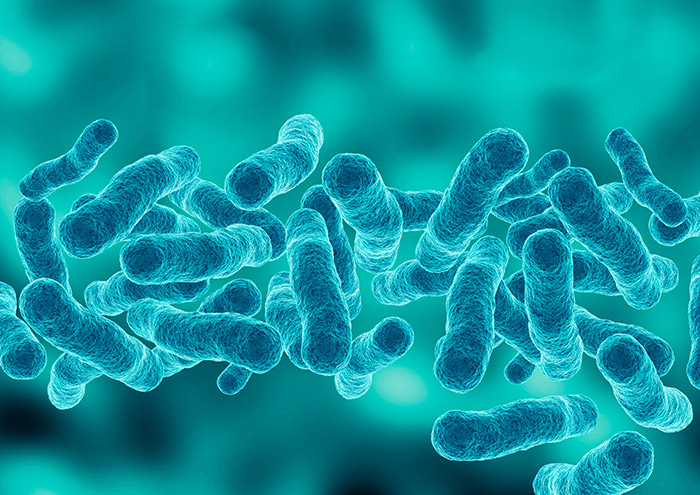Legionella - Legionnaires' Disease in Nevada Detailed
Have you or a family member contracted Legionnaires’? Contact Benson & Bingham Accident Injury Lawyers, LLC immediately. Do not wait. You need counsel. Legionella claims are not “strict liability” claims which bind or hold the premise where the bacterium was contracted responsible. Preserving evidence in a Legionnaires case is crucial to your claim.

Do I have a case? If you have a confirmed diagnosis, the answer is yes. However, proving a case may not be straight forward. Even in claims where the victim has a confirmed diagnosis and there is a confirmed outbreak, proving your case requires specific and identifiable factors. You are certain to need the assistance of counsel experienced in Legionnaires matters. Benson & Bingham Accident Injury Lawyers, LLC handles legionella cases nationwide. There are many pitfalls which Plaintiffs fall victim to by not acting immediately! Understanding the science and medical facts surrounding Legionnaires, the pathway to exposure, and confirming a diagnosis along with the specific serogroup of the bacteria contracted are important factors to the success or failure of your claim.
Where is legionella bacterium found? According to the Southern Nevada Health District (SNHD) legionella are ubiquitous in the environment and can enter a facility through the water supply. They can grow within the biofilm of the water supply system and areas where the water temperature is between 77 and 108°F. These areas can include cooling towers, spas, whirlpools, fountains, showers and misters, all of which have previously been linked to legionnaires disease outbreaks. When the water habitat provides ideal conditions for the legionella bacteria, they aggressively multiply within the aquatic reservoir and can be distributed throughout the system. Thus hospitals, hotels, and buildings with multiple dwellings that maintain larger or looped heating, air-conditioning and water systems pose a higher risk.
The U.S. Center for Disease and Control and Prevention (CDC) estimate that between 8,000 and 18,000 people are hospitalized with Legionnaires’ disease each year in the United States. Ctrs. for Disease Control, Legionella, February 5, 2013. However, many cases are not reported or correctly diagnosed. Therefore the true number of Legionnaires cases may exceed 100,000 cases annually.
How did I contract Legionnaires? Legionella is particularly dangerous because a victim cannot smell, see or taste the bacteria. Further, larger water systems and air conditioning towers found in hotels and hospitals can expose multiple victims during a single outbreak. However interesting, an individual cannot contact Legionnaires Disease by drinking water or coming into physical contact with water that contains the bacteria. Rather Legionnaires is contracted when an individual inhales aerosolized water particles or mist which contains the legionella bacterium. As such, spas, pools, showers, vanities, and mister systems often provide a pathway to transmission.
Currently, there is no known identifiable levels or amounts of the bacteria which a human must be exposed before contracting Legionnaires. However, there are individual risk factors which place individuals at a higher risk for contracting Legionnaires and Pontiac Fever. Those who are over the age of 50, smoke, have kidney or lung disease, cancer, diabetics and or have a compromised immune systems are more susceptible.
Important for family members and those in close proximity to someone with a confirmed diagnosis, Legionnaires is NOT contagious. Legionnaires cannot be passed from a host of the disease to another person.
History of Legionella. Legionnaires disease was first discovered in 1976 at a United States Bicentennial celebration at the Bellevue Stratford Hotel in Philadelphia. Attending members of the American Legion were exposed to the legionella bacterium during an outbreak resulting in 221 cases of pneumonia and 34 deaths. A public heath investigator investigated the matter and discovered the specific pathogen now identified as Legionnaires.
Legionnaires Litigation
There are obvious concerns for the publics health. What preventative measures, if any, have been taken to protect the public from an outbreak? What maintenance steps were taken by the premises to identify and detect the presence of Legionnaires? What cleaning standards are in place to prevent the bacterium from multiplying and dispersing? Were cleaning standards followed? With proper measures in place, a Legionnaires outbreak can be avoided.
Legionnaires cases are expert intensive during the course of litigation. Plaintiff must prove that that the premises (hotel, hospital, nursing facility, or apartment building) was negligent by breaching the “standard of care”. The issue that commonly arises here is identifying that “standard of care”. Not every jurisdiction has a statute or mandatory guidelines for a premise to follow. Many jurisdictions have suggestive standards or protocols to follow issued by agencies such as American Society of Heating, Refrigerating, and Air Conditioning Engineers (ASHRAE), Occupational Safety and Health Administration (OSHA), Association of Water Technologies (AWT), and the U.S. Environmental Protection Agency (EPA). There are endless journals, suggested guidelines, positions statements, and industry societies outlining positions on the “standard of care”. The underlying issue: How do you prove a premise was negligent by breaching the standard of care when no standard of care for a premise is enacted.
Retained litigation experts can assist and opine in identifying this breach through investigation. Experts can connect and relate a defendants breach of care to an outbreak of Legionnaires. Many common themes of this breach from the standard of care include; Failure to set and maintain hot water temperatures at levels adequate to control the bacteria, Failure to supply the water source with sufficient amounts of chlorination, Failure to regularly flush potable water systems, and Failure to properly maintain water systems.
In addition to obtaining microbiologists as experts to meet your burden of proof, Plaintiffs will often retain property management experts to testify as to the standard of care that a facility should maintain to prevent and identify a Legionnaires outbreak. From a medical standpoint, experts are retained to relate your injuries to your actual Legionnaires diagnosis. Dependent upon the medical diagnosis, pulmonary specialist, infectious disease specialist, and cardiologists are often retained as the resulting symptoms among individuals are similar in nature.
Injuries: It is estimated that only about 5% of healthy individuals exposed to legionnaires actually develop symptoms. However the Center for Disease Control (CDC) has reported death rates between 20% and 40% in those contracting legionnaires. Legionnaires Disease can cause serious health problems and can be fatal. Contracting Legionnaires Disease may develop a wide variety of symptoms, including pneumonia, acute renal failure, heart failure, neurological dysfunction (tremors) and brain damage. Victims who survive the disease often have extensive medical and hospital bills and can be left with a permanent impairment. The timeline from an alleged exposure until developing symptoms is critical in these cases. The incubation period as reported by the Center for Disease Control (CDC) is 2 to 14 days with the average latency being 10 days. If symptoms do not manifest within this time period, you do not have a case.
When an individual has a confirmed diagnosis of Legionnaires, it is critical for the patient or family to request detailed lab work. Often times doctors will confirm a legionnaires diagnosis without identifying the serogroup. There are approximately 50 serogroups of the legionella bacteria which are distinguished by a set of antigens. The purpose of detailed lab work is to specifically identify the serogroup the diagnosed individual has with the specific serogroup identified in the suspected premise. Matching these two serogroups causally provides significant weight in establish your claim to the suspected premise.
Of note, about 70% of reported Legionnaires cases found in humans which develop symptoms are linked to serogroup 1. See Department of Veterans Affairs, Office of the Inspector General, Office of Healthcare Inspections, Report No. 13-00994-180, Apr. 23, 2013.
Reporting. It is paramount that you immediately contact the CDC and/or the local health district whereupon the suspected premise is located upon being diagnosed with legionnaires. For those contracting legionnaires in Nevada, please contact the Southern Nevada Health District (SNHD) immediately: https://www.southernnevadahealthdistrict.org/Health-Topics/legionnaires-disease-legionellosis/
In Nevada, under NAC 441A.580 the health authority must conduct an investigation to determine the extent of the possible outbreak and determine an environmental cause of the illness. We have provided contact information and a convenient link for these services. Do not hesitate. Be assured, upon the premise owner becoming knowledgeable of the legionella presence, remediation efforts will immediately begin to control the outbreak. Depending on the location of the outbreak, the local health authority may not preform a detailed inspection or detailed laboratory report identifying the serogroup found at the outbreak site. Benson & Bingham Accident Injury Lawyers, LLC can immediately protect your interest by retaining experts to investigate and obtain samples of the legionella.
If you have been confirmed to have a Legionnaires’ or Pontiac Fever diagnosis, contact Benson & Bingham Accident Injury Lawyers, LLC. You immediately need to confirm that you are taking the correct steps to preserve your claim. Do not hesitate!
Free Consultation

